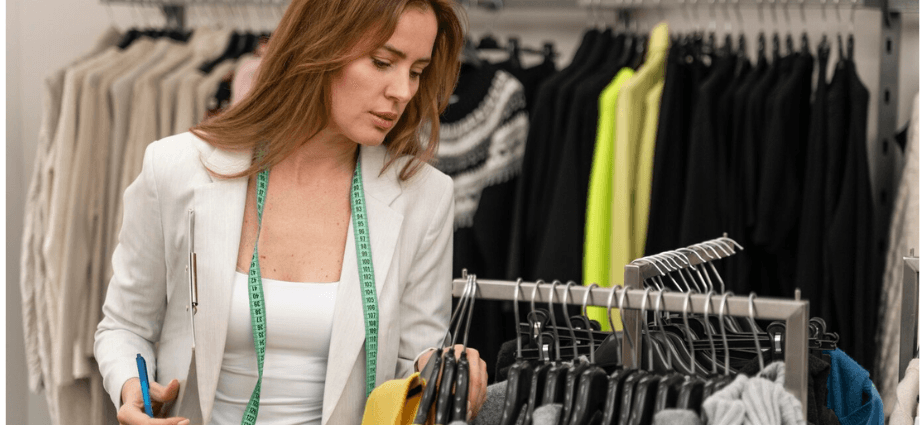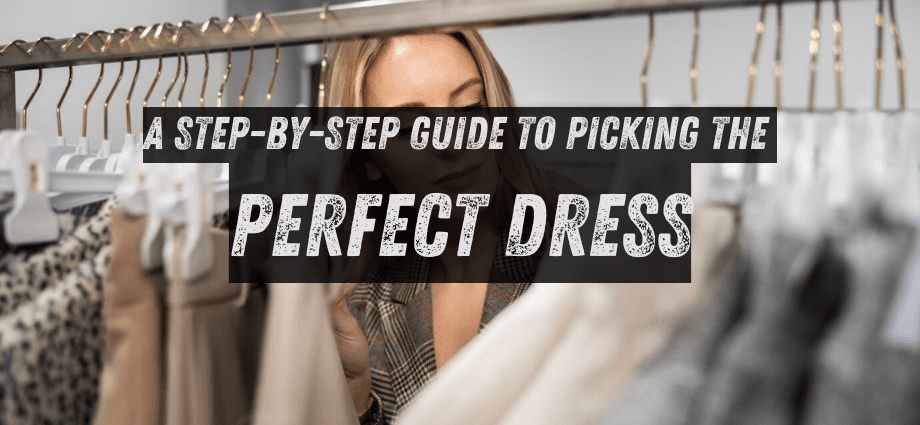When it comes to choosing the perfect dress, it can feel like a big task. Whether you are attending a special event, a casual gathering, or just want something to wear for everyday use, it is important to pick a dress that makes you feel confident and comfortable. This guide will walk you through the steps to help you pick the perfect dress that suits your body, the occasion, and your personal style.
Why Picking the Perfect Dress Matters

Choosing the right dress is more than just about looking good. It can impact how you feel about yourself and how others perceive you. The right dress can boost your confidence, making you feel beautiful and comfortable. It can also reflect your personality and taste, showing others who you are without saying a word.
No matter the event or occasion, picking the perfect dress is important. This guide will help you understand how to make the right choice by following a simple step-by-step process.
Step 1: Understand the Occasion
The first step in picking the right dress is knowing where and when you will wear it. Different occasions call for different types of dresses. Here are some factors to keep in mind when choosing a dress for an event:
- Casual vs. Formal Events
Casual events, such as a day at the park or a lunch with friends, require a relaxed, simple dress. You might choose a summer dress or a comfortable maxi. For formal events, such as weddings or a work event, you may want something more elegant, like an evening gown or a sleek cocktail dress. - Seasonal Considerations
The season plays a big role in your dress choice. For example, in summer, light fabrics like cotton and linen keep you cool, while in winter, heavier fabrics like wool or velvet are better at keeping you warm. - Cultural and Social Factors
It’s also important to think about the dress code of the event. Some events may have a specific theme, or a social setting that requires a more modest or trendy dress. Respecting these guidelines will help you feel appropriate and confident.
Step 2: Know Your Body Shape
Understanding your body shape is crucial to picking a dress that fits you well and flatters your figure. Everyone has a unique shape, and certain dresses will highlight your best features. Here are some common body shapes and the best dress styles for each:
- Hourglass Figure
If you have an hourglass figure, with a balanced waist, hips, and shoulders, choose dresses that emphasize your curves. A fitted dress with a defined waist, such as a wrap dress or A-line dress, will look great on you. - Pear-Shaped Figure
For a pear-shaped body, where the hips are wider than the shoulders, an A-line dress can help balance out your proportions. Dresses that draw attention to your upper body, like those with interesting necklines or embellishments, are also a great choice. - Apple-Shaped Figure
If you have an apple-shaped body, where weight is carried around the waist, empire-waist dresses are flattering. Dresses with a slightly loose fit can help you feel more comfortable and avoid feeling restricted. - Rectangle-Shaped Figure
For those with a rectangle body shape, where your shoulders, waist, and hips are about the same width, choose dresses that add curves. Dresses with pleats, ruffles, or an A-line cut will create a more balanced look.
Step 3: Find the Right Fit and Fabric
When picking a dress, the fit and fabric are two of the most important factors. A dress that is the right fit for your body will make you feel comfortable and confident.
- Choosing the Right Fit
A well-fitting dress is key. To find the right fit, you need to measure yourself correctly. Use a measuring tape to measure your bust, waist, and hips, then compare your measurements with the dress size chart of the store. Keep in mind that sizes can vary, so it’s important to try on the dress before purchasing if possible. - Fabrics to Consider
The fabric of your dress should match the weather and your comfort level. For warmer weather, fabrics like cotton, linen, and chiffon are breathable and comfortable. In colder weather, heavier fabrics like velvet, wool, or silk can provide more warmth and style. - Tailoring and Adjustments
Even if a dress fits well, it might need some small adjustments. A tailor can help you make the dress fit perfectly to your body. Popular alterations include shortening the hem or taking in the sides for a more flattering look.
Step 4: Color and Pattern Selection
Choosing the right color and pattern is important for your overall look. The right combination can enhance your appearance and make you feel more confident.
- How to Choose Flattering Colors
Consider your skin tone when choosing a color. If you have a warm skin tone, colors like red, orange, and yellow will look good on you. If you have a cool skin tone, colors like blue, green, and purple are more flattering. - Pattern Preferences
Solid colors are always a safe choice, but patterns can add interest to your look. Floral patterns, stripes, or polka dots are fun and stylish, but make sure the pattern fits the occasion. For example, a floral dress might be perfect for a garden party but too casual for a formal event. - Balance Color and Event
Some events call for more muted colors, like black, navy, or beige. However, for a fun celebration or a summer day, bright and bold colors work well. Always make sure your dress’s color fits the mood of the event.
Step 5: Accessorizing Your Dress
Once you have found the perfect dress, accessorizing is the next step. Accessories can complete your look and add a personal touch to your outfit.
- Choosing the Right Shoes
Shoes are an important part of your outfit. If you’re going to a formal event, high heels or elegant flats work well. For a more casual event, sandals or sneakers might be the best choice. - Jewelry and Other Accessories
Jewelry can add sparkle and style to your dress. For a formal look, choose subtle jewelry like a simple necklace or earrings. For a more casual outfit, you can go for bolder, statement pieces. - Outerwear and Layering
Depending on the weather and event, you might need an outer layer. A jacket, shawl, or scarf can complement your dress and keep you warm. Make sure the outerwear matches the formality of your dress.
Conclusion
When it comes to picking the perfect dress, the key is to make sure it suits your body shape, fits well, and is appropriate for the occasion. Take your time to try on different styles and trust your instincts. Remember, a dress that makes you feel good will always be the right choice. Don’t forget to accessorize and choose the right color to complete your look. With these simple steps, you’ll be ready to step out in style and confidence, no matter what the event is.




